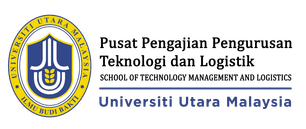WASTE REDUCTION IN BODY REPAIR & PAINT AREA TOYOTA NASMOCO RINGROAD WITH LEAN MANUFACTURING APPROACH
DOI:
https://doi.org/10.32890/jtom2020.15.1.2Keywords:
Lean manufacturing, waste, 5W 1H, FMEAAbstract
Toyota Nasmoco Ringroad Surakarta is a branch dealer that provides sales services, general repairs, body repair & paint, and spare parts. In the vehicle repair process, waste was found in the form of defect. The percentage of defect occurring from January to March 2020 shows an average of 85.22%. This study aims to identify critical waste defect and determine the factors that cause critical waste defect to occur and provide recommendations for improvements in order to reduce the waste that occurs in the area of body repair & paint. Efforts to reduce waste defects are carried out with a lean manufacturing approach. The research was carried out in three stages. The first stage begins with conducting a field study to identify problems. In the second stage, defect data is collected, which will be processed using Pareto diagrams so that the type of defect occurs most frequently. Furthermore, in the third stage, data processing begins with the identification of 9 wastes. Then identify the factors that cause waste using the fishbone diagram and the 5W + 1H method. Furthermore, the selected critical waste is processed using FMEA to identify systems that have a risk of failure which is indicated by the number of RPNs from the value rating of severity, occurrence, and detection. Based on the highest number of RPNs occurred in the polishing and reassying sub-area of 210. Proposals for improvement were a box, poka-yoke, and Kamishibai designs. Therefore, it is hoped that the proposed repair method will reduce the risk of defect arising during the vehicle repair process.
Metrics
References
Chrisna, C., & Ahmad. (2018). Pemetaan Pemborosan (Waste) Dalam Proses Produksi Pada Seksi Painting Plastic (Studi Kasus Perusahaan Otomotif). Jurnal Teknik Industri, 8(3), 201-212. Doi: 10.25105/jti.v8i3.4734
Czifra, G., Szabó, P., Mĺkva, M., & Vaňová, J. (2019). Lean Principles Application in the Automotive Industry. Acta Polytechnica Hungarica, 16(5), 43-62. Retrieved from https://www.uni-obuda.hu/journal/Czifra_Szabo_Mlkva_Vanova_92.pdf
Dewi, N. A., & Singgih, M. L. (2019). Perbaikan Kualitas Proses Thermoforming Round Drinking Cups Menggunakan FMEA. Jurnal Teknik ITS, 8(1), 30-34. Doi: 10.12962/j23373539.v8i1.37966
Gaspersz, V. (2007). Lean Six Sigma for Manufacturing and Service Industries: Strategi Dramatik Reduksi Cacat/Kesalahan, Biaya, Inventori, dan Lead Time dalam Waktu Kurang dari 6 Bulan. Jakarta: PT. Gramedia Pustaka Utama.
Goshime, Y., Kitaw, D., & Jilcha, K. (2019). Lean Manufacturing as A Vehicle for Improving Productivity and Customer Satisfication. International Journal of Lean Six Sigma, 10(2), 691-714.
Herwindo, R. D., Udisubakti, C., & Anshori, M. Y. (2017). Implementasi Lean Manufacturing Car Body Studi Kasus di PT. Inka (Persero). Business and Finance Journal, 2(2), 131-144. Retrieved from http://journal.unusa.ac.id/index.php/bfj/article/view/432
Junaidi, M., Sandora, R., & Budianto. (2017). Implementasi Lean Manufacturing Guna Meningkatkan Efisiensi pada Divisi Manufacturing Departemen Mold di PT. Manufaktur Mold. Conference on Design and Manufacture and Its Application, I, hal. 407 - 413. Retrieved from http://journal.ppns.ac.id/index.php/CDMA/article/download/357/294
Knop, K., & Ulewicz, R. (2018). Analysis of The Possibility of Using The Kamishibai Audit in The Area of Quality Inspection Process Implementation. Scientific Quaterly "Organization and Management", 3(43), 31-49. doi:10.29119/1899-6116.2018.43.3
Krehbiel, T. (2019). Cause-and-effect diagrams "The Information System Consultant's Handbook. CRC Press.
Kusuma, Y. S. (2017). Perbaikan Proses Produksi Menggunakan Pendekatan Lean Manufacturing (Studi Kasus: Unit Produksi Urea Pabrik-4 PT. Pupuk Kalimantan Timur). Tugas Akhir, 1-209. Retrieved from http://repository.its.ac.id/id/eprint/46431
Niederstadt, J. (2014). Kamishibai Boards: a Lean Visual Management System that Supports Layered Audit. Boca Raton, United States of America: CRC Press Taylor & Francis Group.
Nordin, N., & Deros, B. M. (2017, September 3). Organisational Change Framework for Lean Manufacturing Implementation. International Journal of Supply Chain Management, 6(3), 309-320.
Prabowo, R., & Suryanto, A. P. (2019). Implementasi Lean dan Green Manufacturing Guna Meningkatkan Sustainability pada PT. Sekar Lima Pratama. Jurnal SENOPATI, 1(1), 50 - 61. Retrieved from https://ejurnal.itats.ac.id/senopati/article/view/535
Pradana, A. P., Chaeron, M., & Khanan, M. S. (2018). Implementasi Konsep Lean Manufacturing Guna Mengurangi Pemborosan Di Lantai Produksi. OPSI - Jurnal Optimasi Sistem Produksi, 11(1), 14-18. Doi: 10.31315/opsi.v11i1.2196
Rewers, P., Trojanowska, J., & Chabowski, P. (2016). Tools and methods of Lean Manufacturing - a literature review. Proceedings of 7th International Technical Conference TECHNOLOGICAL FORUM 2016, (hal. 135-139). Czech Republic,.
Ristyowati, T., Muhsin, A., & Nurani, P. P. (2017, June). Minimasi Waste pada Aktivitas Proses Produksi dengan Konsep Lean Manufacturing. OPSI - Jurnal Optimasi Sistem Industri, 10(1), 85 - 96. Doi: 10.31315/opsi.v10i1.2191
Suhardi, B., Anisa, N., & Laksono, P. W. (2019). Minimizing waste using lean manufacturing and ECRS principle in Indonesian furniture industry. Cogent Engineering, 6(1), 1-13. doi:10.1080/23311916.2019.1567019
Downloads
Published
How to Cite
Issue
Section
License
Disclaimer
The Journal of Technology and Operation Management (JTOM) has taken all reasonable measures to ensure that material contained in this website is the original work of the author(s). However, the Journal gives no warranty and accepts no responsibility for the accuracy or the completeness of the material; no reliance should be made by any user on the material. The user should check with the authors for confirmation. Articles published in the Journal of Technology and Operation Management (JTOM) do not represent the views held by the editors and members of the editorial board. Authors are responsible for all aspects of their articles except the editorial screen design.














